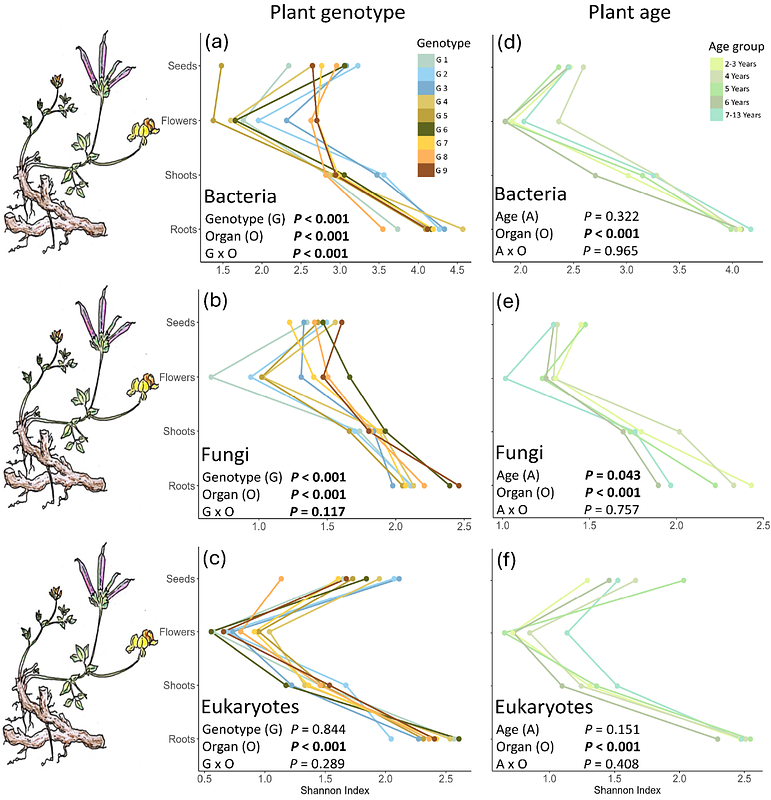Plant age and genotype explain variation in the microbiome of natural Lotus corniculatus populations

Plant age and genotype explain variation in the microbiome of natural Lotus corniculatus populations
Reis, F.; Lutap, K.; Durka, W.; Jung, J. H.; Kemen, E.; Bossdorf, O.
AbstractIn natural populations, plants are associated with a huge diversity of bacteria, fungi and other microbes. There is usually substantial microbiome variation between different plant individuals and populations, and the drivers of this variation are still poorly understood, particularly in wild plants. Here, we were interested in the potential for plant genotype and plant age to explain intraspecific variation in the plant microbiome. In seven natural populations, we genotyped a total of 168 plants over four years, determined their ages through herb chronology, and then sequenced their root, shoot, flower and seed microbiomes. We found that plant genotypes differed both in the diversity and composition of microbes, and that some microbial taxa were associated with particular plant genotypes - a result that we experimentally confirmed for one of the observed genotype-microbe associations. The genotype effects tended to be strongest and most consistent for plant-associated bacteria, with the largest plant genotype differences in the microbiome diversity of flowers and seeds. In contrast to the widespread plant genotype effects, we found less evidence for an effect of plant age on microbiome diversity: the age of plants explained variation in fungi diversity, and it was associated with the abundance of several microbial taxa. Our study indicates that the genotype of a plant and - to a lesser degree its age - influence the diversity and composition of plant-associated microbiota, even in complex natural environments.